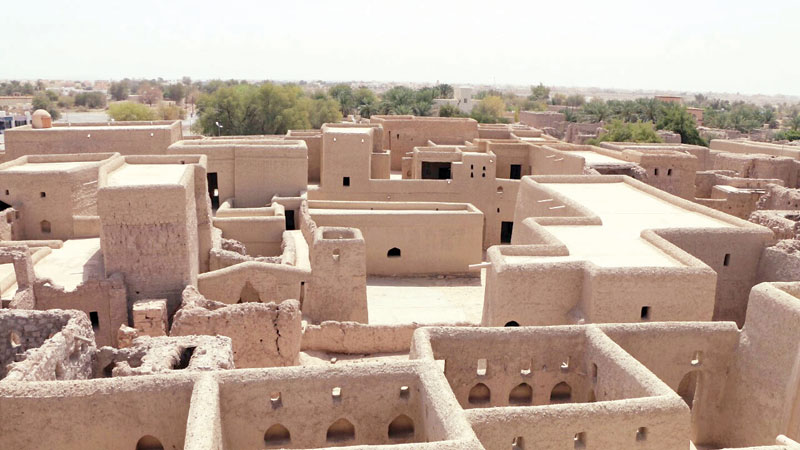


MANAH: Harat Al Bilad in the Wilayat of Manah is known as one of Oman’s largest ancient archaeological neighbourhood. It contains 376 houses and nearly 250 wells. It still preserves Oman’s architecture despite more than nine centuries of construction by skilled Omani hands, where its walls and partitions have remained steadfast to this day.
Harat Al Bilad dates back to about the fifth Hijri century. The scholar Shaikh Nejad bin Ibrahim was among the first who settled in Harat Al Bilad and founded Al Yamania Quarter in 470 Hijri. Harat Al Bilad has been called several names, such as ‘Manah Fortress’ and ‘Fortress of bin Nejad.’
There was an active scientific movement accompanied by copying activities of many books and Fiqh encyclopedias, as noted by historical researcher Khalfan bin Salim al Busaidy, from the Wilayat of Manah in his book Donations and Grants in the history of the people of Manah.
Harat Al Bilad is located in the middle of the Wilayat of Manah with its architectural character, which represents a model of the ancient Omani archaeological Harat and villages.
The visitors can find, when entering the main gate, the Morning Gate, which was built close to the market of the wilayat, in addition to other gates that are spread throughout the Harat, like ‘Bab Al Qasab’, ‘Bab Al Nasr’, ‘Bab Al Rawla’ ‘Bab Al Burj’ and ‘Bab Al Duajain’.
In the field of defence and protection of the Harat, it has a wall which surrounds it from all sides. The people took care of the wall because it is the first line of defence for them and the Harat against dangers, in addition to the defence towers that have several openings and windows used to defend and control the enemy.

Harat Al Bilad includes four ancient mosques spread along its central lane. They are Al Ali, Al Ain, Al Shara and Al Rahba. Dr Eros Baldisera, professor of Arabic literature at the University of Venice, Italy, author of Writings in the Old Omani Mosques, said that the Mihrab of Al Ali Mosque dates back to the year 909 Hijri. Mihrab of Al Ain Mosque dates back to 911 Hijri, and close to Al Ain Mosque, Al Shara Mosque, whose Mihrab dates back to 922 Hijri.
Ahmed al Tamimi, Director of Heritage and Culture Department in Governorate of Al Dakhiliyah, said that in order to preserve this cultural legacy, the Ministry of Heritage and Culture carried out a project to renovate Harat Al Bilad in the Wilayat of Manah in its projects aimed at restoring the old Harat in the Sultanate.
He said that in 2008 the actual restoration work began under the supervision of specialists from the Directorate-General of Antiquities and Museums. The works included the restoration and reconstruction of dilapidated and falling houses, in addition to the restoration of mosques along the main long corridor. The works were completed at the end of 2016.
The Ministry of Tourism, in cooperation with the Ministry of Heritage and Culture, the Implementation Support and Follow-up Unit, and Omran Company, organised a seminar on the ‘Revival of Harat Al Bilad in the Wilayat of Manah’ to ensure the benefit of the rich cultural heritage of Oman, to open these sites for economic use and management by private companies and small and medium enterprises within clear environmental heritage and social criteria for the restoration and rehabilitation.
The project will enhance the national history from books to sites that have embraced this history so that visitors can have a unique experience. These projects will provide an environment that reflects Omani life so that visitors can have real experience in national heritage sites.
It is worth mentioning that Schumann Pandya from the University of Liverpool, received a doctorate on Harat Al Bilad after a detailed study of the architectural aspects and the population, which lasted about eight years he spent between the walls of this neighbourhood. — ONA
Oman Observer is now on the WhatsApp channel. Click here



